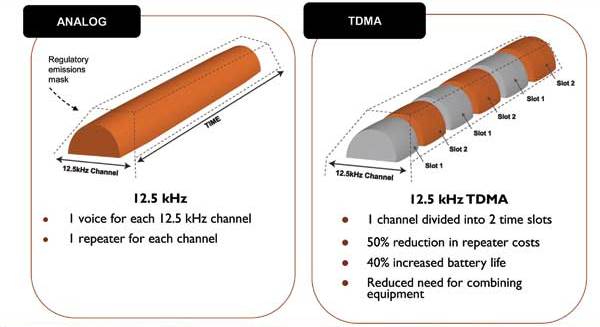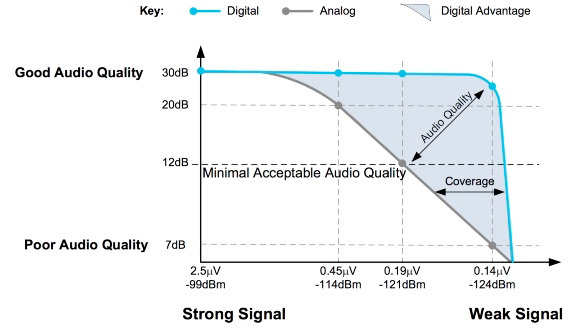Digital Mobile Radio (DMR) is a land-mobile radio network standard developed by the European Telecommunications Standards Institute (ETSI).
DMR uses Time Division Multiple Access (TDMA) to provide two 30 ms “slots” per 12.5 kHz radio channel.
Each slot can carry independent voice conversations – this means that each DMR repeater provides two simultaneous voice channels – illustrated in the diagrams below:

Each slot can also have an almost unlimited number of “talk groups”, which effectively function as discrete channels within that slot. Users on one talk group will not hear those on another. I like to think of Talk Groups as “Conversation Labels or Tags”. When the label or “Talk-Group” matches what your radio is programmed to receive, you hear this conversation. Anyone else doesn’t.
DMR provides better noise rejection and weak signal performance than analogue systems by using advanced Forward Error Correction (FEC) and codecs to remove noise and reconstruct signals that would otherwise be lost – depicted in the following diagram:

For an answer from the commercial perspective, here’s a training site from Tait Communications.
John Burningham, W2XAB produced a booklet back in February 2015 with a description of Amateur Radio use of DMR.